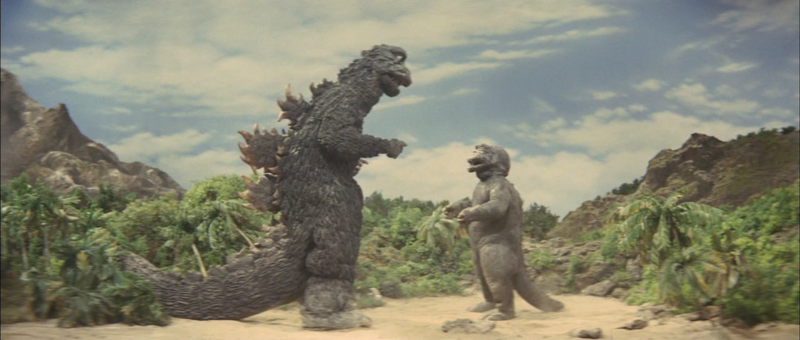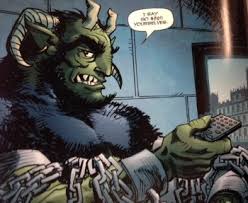
It is hardly a novel concept to bring up realism when talking about animated films. From noting the “fingerprints” on the toy-based characters of The Lego Movie (2014) to remarking upon Pixar’s advancements in replicating hair and clothing, popular criticism of computer animated movies are as apt to discuss advancements in realistic CGI as they are plot or character development. Throughout the history of feature animation, be it hand drawn, stop-motion, or computer generated, there has been an ongoing endeavor to capture reality. The first animated feature by Walt Disney Studios is no exception. Released in 1937, Snow White and the Seven Dwarfs was a technical marvel as much as it was an artistic and financial success. But aside from merely taking steps to emulate reality, Snow White exhibits traits that mirrored emerging trends in realist live action filmmaking, including deep focus photography and simulated camera movement.
Even the plot structure of Snow White follows the tenants of realism (perhaps even neorealism) as outlined by Cahier du Cinema editor-in-chief Andre Bazin when discussing post-war Italian film in the 1940s. In Italian neorealism, Bazin argues that the causal relationships between plot events tend to be relaxed. One event does not lead into the other, but follows a more episodic sequence of events. Though there is a central narrative thrust, motivated by Snow White’s escape from the Evil Queen, much of Snow White and the Seven Dwarfs is episodic. Once Snow White is safe in hiding at the dwarfs’ home, the main story gives way to a series of domestic vignettes (with only occasional check-ins with the Evil Queen to advance the plot). This can reasonably be attributed to the gag-based structure of Disney’s previous animated shorts. Entire segments of Snow White are devoted to milking jokes out of the vagaries of cottage life, from a song about handwashing, to the dwarfs fighting over sleeping arrangements.

In addition to plot structure, Snow White evidences a concerted effort to create realistic imagery. Many sequences in Snow White mimic 3-dimensions using the newly-minted multiplane camera. The oldest version of multiplane technology was devised by Lotte Reiniger for her 1926 silhouette animated film The Adventures of Prince Achmed. For Reiniger’s film, the technique used four layers of artwork lined up in front of a horizontal camera. As the lens peered through each layer simultaneously, the image took on the illusion of depth. The horizonally-oriented multiplane camera went thorough several iterations, including variants created in the early 1930s by former Disney animator Ub Iwerks, and Fleischer Studios’ Stereoptical camera. For Snow White, the multiplane was reoriented to a vertical, moving camera and was able to accommodate up to seven layers of art, painted onto glass plates. Backgrounds and foregrounds appear in perspective with the camera, allowing for the appearance of movement through space in scenes such as the dwarfs’ march home in “Heigh Ho” or the Queen’s transformation into an evil crone in which the objects in the frame appear to spin around her.
In The Evolution of the Language of Cinema, Andre Bazin writes of the advantages of using deep focus cinematography as a way of “[bringing] the spectator into a relation with the image closer to that which he enjoys in reality.” Keeping the entire frame in focus, and organizing elements of the mise-en-scene each plane (background, middle ground, and foreground) requires a more active viewing experience. Consequently, audiences are free to interpret the scene visually, having more choice as to which elements to focus on. The effect created by the multiplane camera in Snow White is similar to that of deep focus, and is especially apparent in the sequence between Snow White and the Huntsman hired to kill her. The scene opens with a wide shot of a meadow: a stream meanders through the foreground, Snow White picks flowers in the middle ground, and the Huntsman ominously observes her from the shadows in the background. Rather than direct the eye through a series of cuts, all of the visual information needed to make sense of the story is presented within a single frame.

Snow White also gestures towards realism in its use of camera placement. Disney’s previous work on the Silly Symphonies shorts series had reflected the older mode of static camera placement. Though there were moments that defy this fourth wall proscenium-style framing (see the 1929 entry The Skeleton Dance, in which one of the dancing skeletons moves towards and appears to swallow the “camera”), they are isolated incidents. Snow White and the Seven Dwarfs moved beyond this traditional mode by treating the camera as an object occupying a physically “real” space. Instances occur throughout the film in which the camera is strategically situated within a scene so characters move around it (e.g., a mine car moving over the camera to reveal the Dwarfs during a rendition of “The Working Song”), and vice versa (the camera’s animal-eye-view of the cottage floor during “Whistle While You Work”). The best implementation of the camera-in-space comes during first musical number “I’m Wishing.” As Snow White sings into a wishing well, the camera is “placed” in the well, angled up at her. To complete the illusion of a camera physically occupying the well, these in-well shots are animated as though the camera is underwater; the image of Snow White framed in the well is obscured by a shimmering, ripple (an effect created by the multiplane).

A major concept in Bazin’s writing is the notion that, in order for a photographic image to be “real,” there must be something physically in front of the camera. Already, this statement seems contrary to animation, for the images onscreen are not photographic reproductions of physical objects, but representational drawings, or as Bazin states in The Ontology of the Photographic Image, “an ersatz of the processes of reproduction.” It could be that the drawing itself is a physical object that is being recorded by the camera. However there is a potentially stronger argument to be made for the use of rotoscoping in Snow White. Rotoscoping is an animation technique invented in 1915 by Max Fleischer for his Out of the Inkwell silent short series featuring Koko the Clown. It involved projecting footage of live-action frame-by-frame movement onto the animator’s drawing board, to be used as a guide. For example, if a live action image of a woman walking was projected, the animator would trace over the image to create an animated proxy of the woman walking. Rotoscoping in Snow White and the Seven Dwarfs was used for some of Snow White and Prince Charming’s scenes and the majority of the Evil Queen’s role—her sequences were first filmed in live action, then converted into animation, capturing realistic gestures, expressions, and even costume and hair movements.
However “real” the rotoscoped character moments are in Snow White, their presence bring up a common problem with photo-realistic animation. The Evil Queen (especially pre-tranformation) exhibits a stilted “acting” style and Snow White’s face is at times masklike and unexpressive. This is an early incidence of the “uncanny valley” paradox of rendering human characters— the more realistic a representation of a human is, the more alien (and vaguely unsettling) it becomes. By comparison, the rubbery squash-and-stretch animation style of the Seven Dwarfs is significantly more natural. Perhaps art historian Erwin Panofsky was right: it was “a fall from grace when Snow White introduced the human figure…the very virtue of the animated cartoon is to animate…to endow lifeless things with life, or living things with a different kind of life.” Though Snow White made significant strides in attaining realism in animated films, feature animation still had a long journey towards achieving the “lifelike.”





